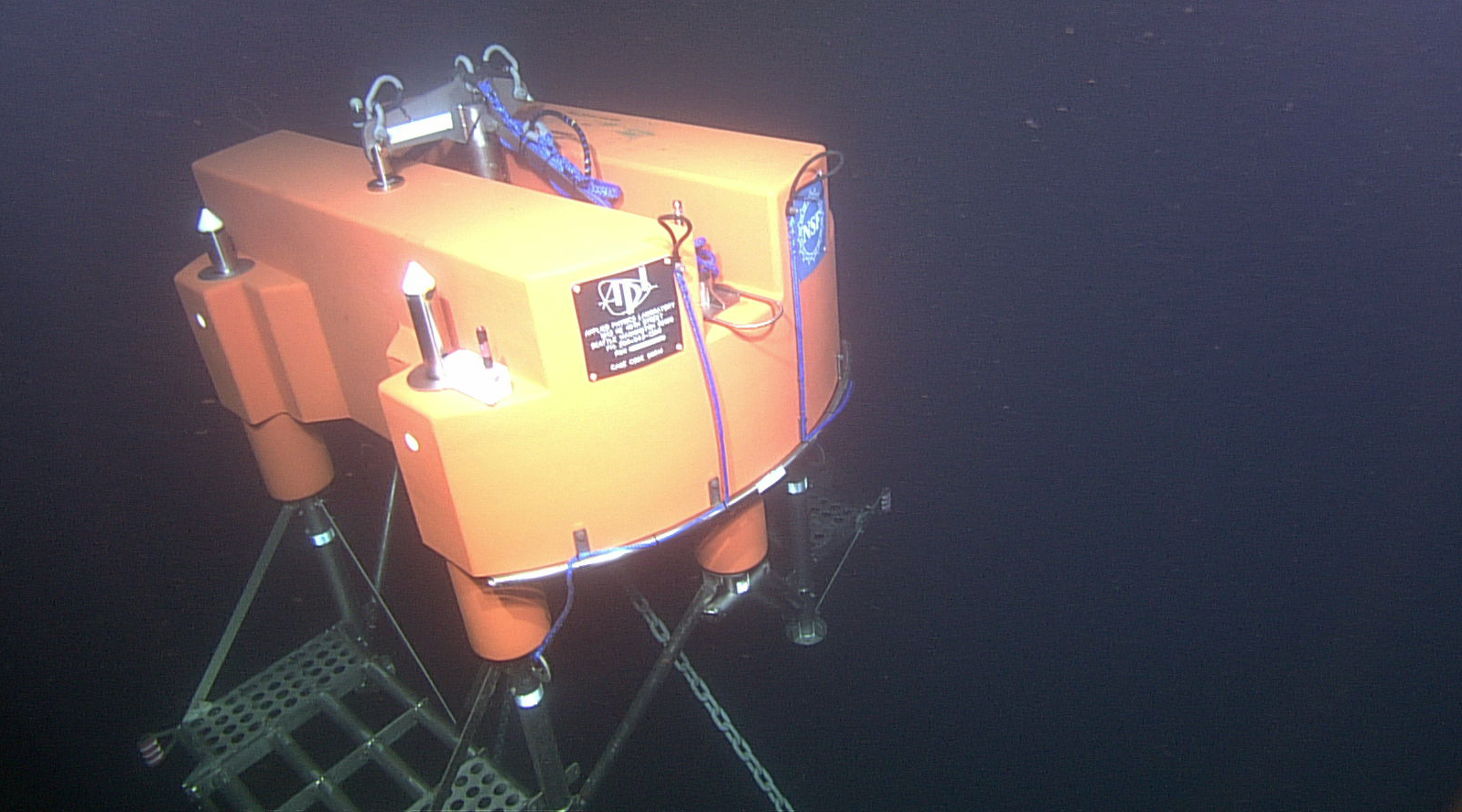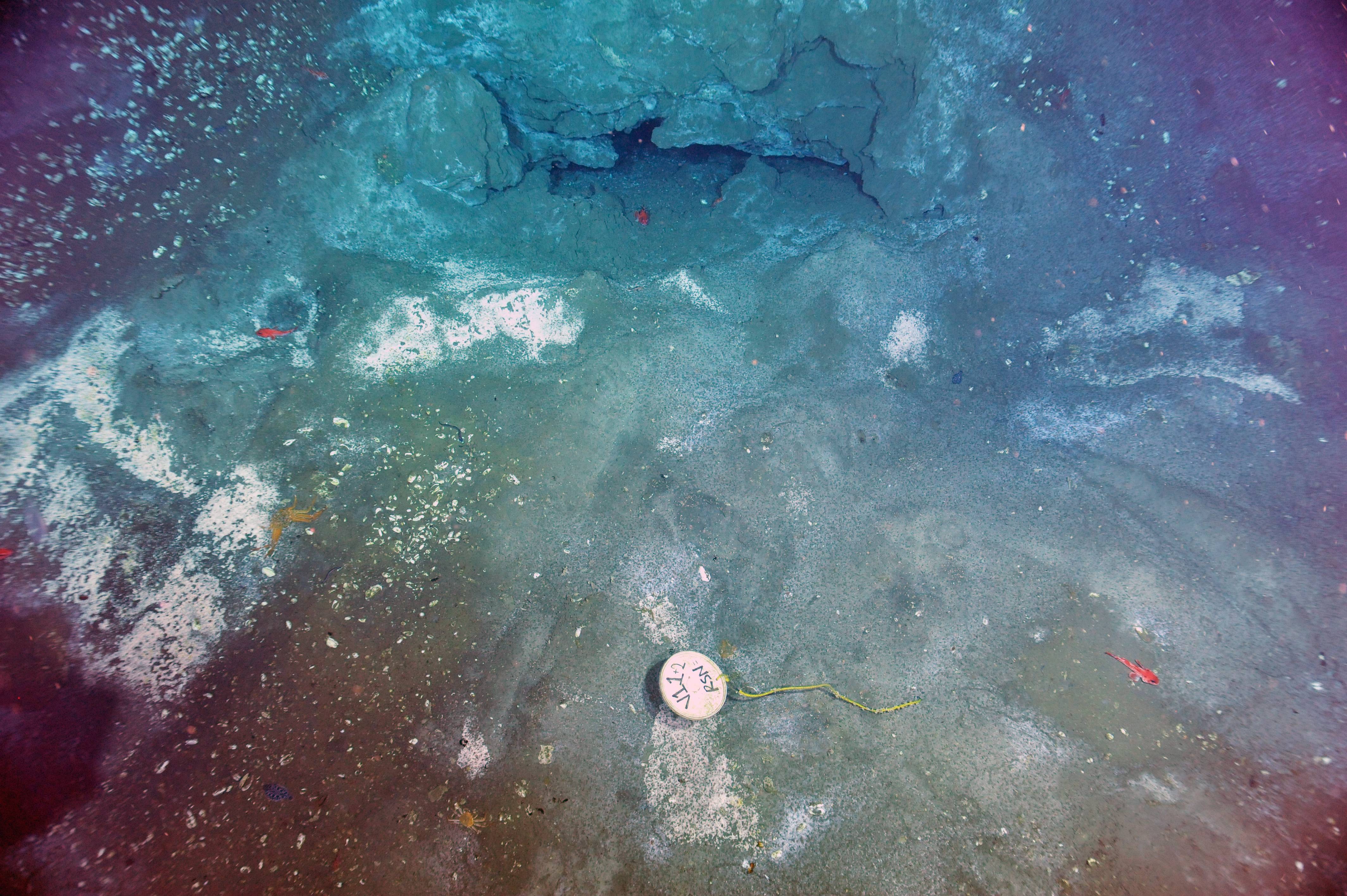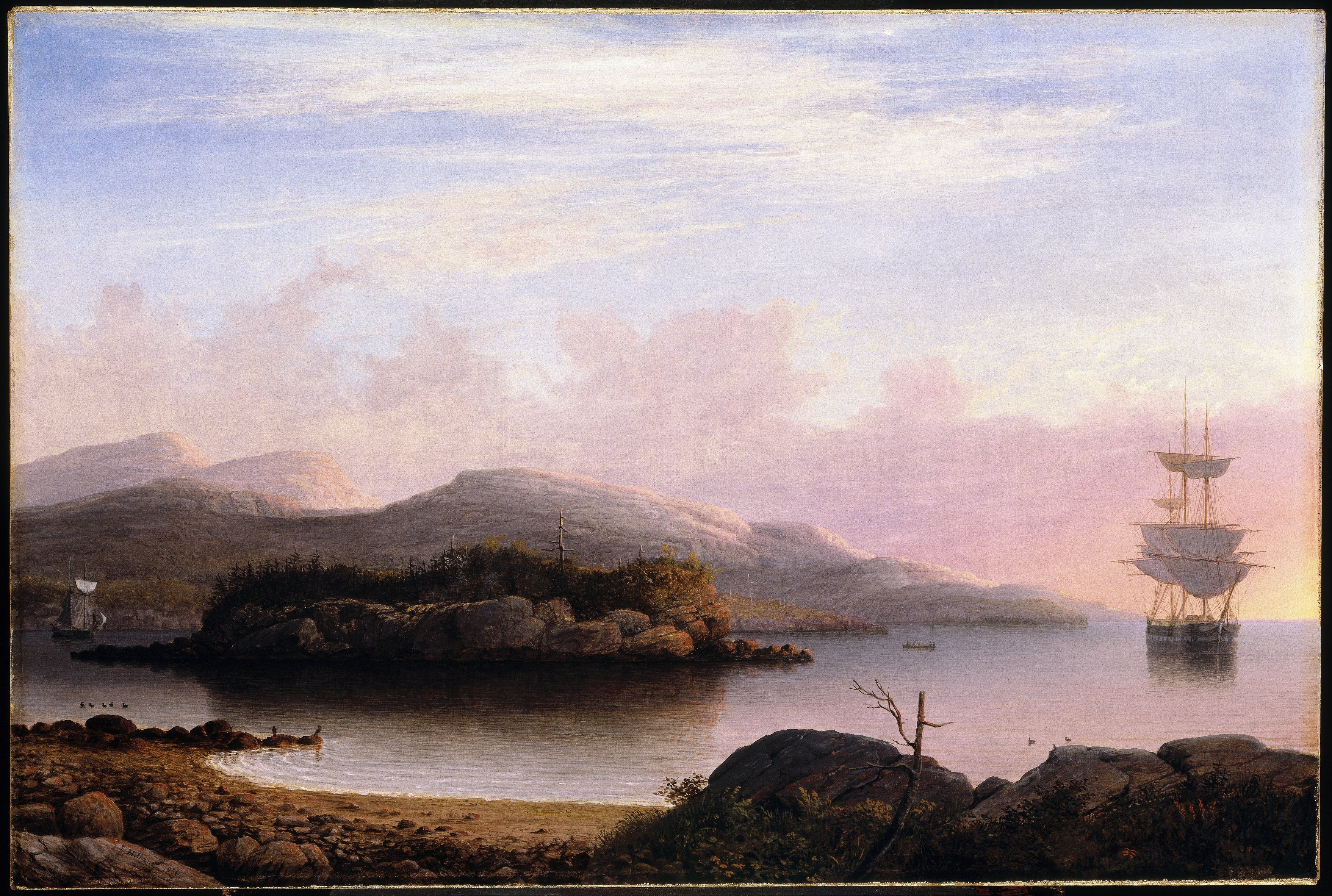Image Archive





























The 13 ft-across platform at the EA Offshore Site (197 m water depth) is visited by the ROV ROPOS prior to installation of the Shallow Profiler and Instrument Platform on a follow-on dive. Photo credit: NSF-OOI/UW/CSSF; Dive R1762; V14.

Captain Eric Haroldson of the R/V Thompson oversees loading of a cable spool in preparation for installation at Southern Hydrate Ridge by the ROV ROPOS. Photo Credit: Mitch Elend, University of Washington, V14.

Einstein's Grotto changes rapidly over hours to days. Revisitation of the active seep site today showed that a large sedimentary protrusion at the vent opening had desintegrated and a large and vigorous bubble plume was exiting the orifice.Photo credit: NSF-OOI/UW/CSSF; Dive R1761; V14.

Orest Kawka (RSN School of Oceanography Project Scientist) and Trina Litchendorf (RSN APL Engineer) work on the EA Oregon Offshore Shallow Winched Profiler, and Instrument Platform on the fantail of the R/V Thompson. Photo Credit: Mitch Elend, University of Washington; V14.

A strong bubble plume issues from Einstein's Grotto early morning of August 29, 2014. Photo credit: NSF-OOI/UW/CSSF; Dive R1761; V14.

There are three shallow profilers that will be installed on the cabled observatory. These state-of-the-art two-legged moorings include a 13 ft-across platform at ~ 200 m water depth. The large platform hosts an instrumented shallow winched profiler, which makes several trips a day from ~ 200 meters water depth to just beneath the oceans surface. It also hosts an instrumented platform that includes larger instruments such as a 5-beam ADCP, zooplankton sonar, and a digital still camera. Image Credit: Center for Environmental Visualization, UW. V14

This strange fish, Genioliparis ferox (Stein), was first described in 1978 from a single specimen and never seen afterwards. It was imaged at 2901 m at the Slope Base Site during ROPOS Dive R1757. G. ferox is a ferocious mid-water predator, with many sharp teeth. Credit: UW/NSF-OOI/CSSF; Dive R1757; V14.

Faubion Taylor gets to experience putting on a survivial suit the first day of Leg 4, VISIONS'14. Photo Credit: Mitch Elend, University of Washington. V14.

The R/V Thompson sails through the Newport channel on its way to the base of the continental margin, Leg 4 begins for VISIONS'14. Photo Credit. Victoria Selesnick

screenshot2014-08-28at2.12.55pm

Fitz Henry Lane, 1851, oil on canvas

Fitz Henry Lane, 1851,

Fitz Henry Lane, 1853, oil on canvas

Fitz Henry Lane, 1853

Fitz Henry Lane, 1856, oil on canvas

Winslow Homer, 1899, water color

Winslow Homer, 1873, oil on canvas

Winslow Homer, 1890, water color

Winslow Homer, 1899, oil on canvas

Winslow Homer, 1890

1873-76, oil on canvas

virgin_nw_2010

screenshot2014-08-28at12.54.45pm

A dinner plate jellyfish floats past the ROV ROPOS above Axial Seamount. Photo credit: NSF-OOI/UW/CSSF; V14

tiny_towers_e_2013

screenshot2014-08-28at12.14.57pm

Close up of a Neptunea snail on its egg stalk at the summit of Southern Hydrate Ridge. Credit: UW/NSF-OOI/CSSF; ROPOS Dive R1758; V14.

screenshot2014-08-28at12.08.56pm
- Anemone
- Animal
- Arthropod
- ASHES
- Axial
- Axial Base
- Axial Biology
- Axial Caldera
- Bacteria
- Basalt Lava
- BEP
- Biofouling
- biolgoy
- Biology
- Camds
- Camera
- Camhd
- Central Caldera
- Ciliates
- Cnidaria
- Coastal Biology
- Crab
- Deep Profiler Mooring
- Dive Highlights
- Eastern Caldera
- Echinoderms
- Endurance Array
- Engineering Team
- ENLIGHTEN 10
- Exploratorium
- Fish
- Geology
- HD Camera
- HPIES
- Hydrate Ridge
- Hydrates
- Hydrophone
- Hydrothermal Vents
- Illustration
- Inshore 80 Meters
- Instrument
- International District
- J-BOX
- Jason
- Jellyfish
- Junction Box
- K12
- Lava
- Mollusk
- Moorings
- Nodes
- Nudibranch
- Octopus
- OOI
- Oregon Offshore
- Oregon Offshore 600 m
- Oregon Shelf
- Oregon Slope Base
- People
- PN1B
- PN1D
- Polychaetes
- PPSDN
- Primary Node
- RASFL
- ROCLS
- ROPOS
- ROPOS Dives
- ROV Team
- RV Revelle
- RV Sikuliaq
- RV Thompson
- Salp
- Sample
- SC13
- Science Team
- Sea Cucumber
- Sea Star
- Sea Urchin
- Seafloor
- Seismometer
- Sensors
- Shallow Profiler Mooring
- Shark
- Shipboard
- Shore Station
- Slope Base
- Smoker
- Soft Coral
- Southern Hydrate Ridge
- Sponge
- Squid
- Students
- Students & Guest Participants
- Tmpsf
- Tubeworms
- VISIONS 11 Leg 1
- VISIONS 11 Leg 2
- VISIONS 11 Viewers
- VISIONS 13
- VISIONS 14
- VISIONS 15
- VISIONS 16
- VISIONS 17
- VISIONS 18
- VISIONS 20
- VISIONS 22
- VISIONS 23
- Visualization
